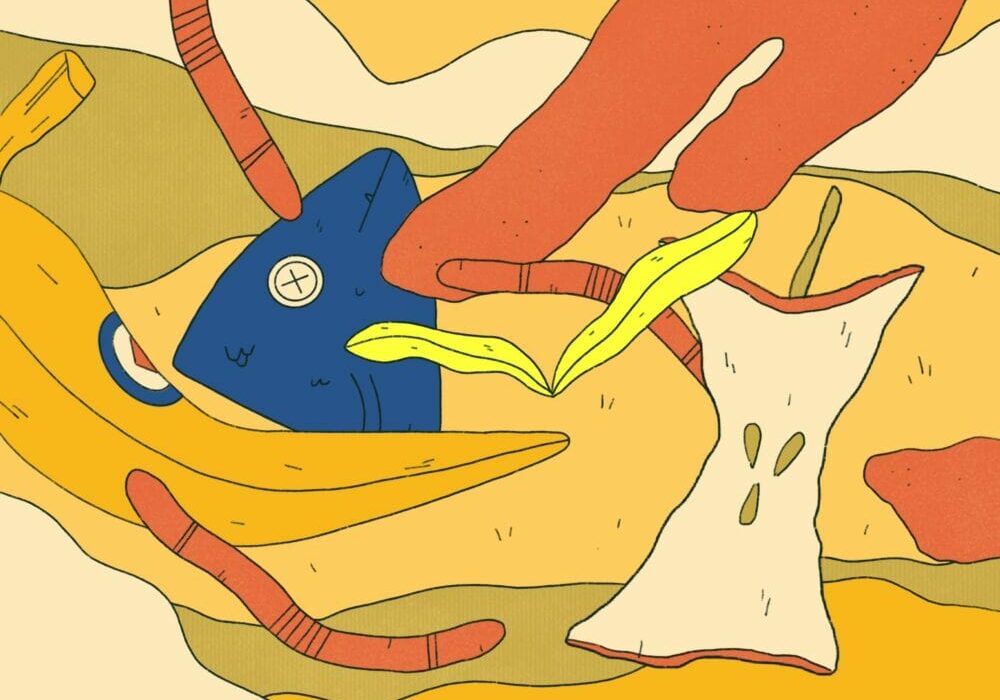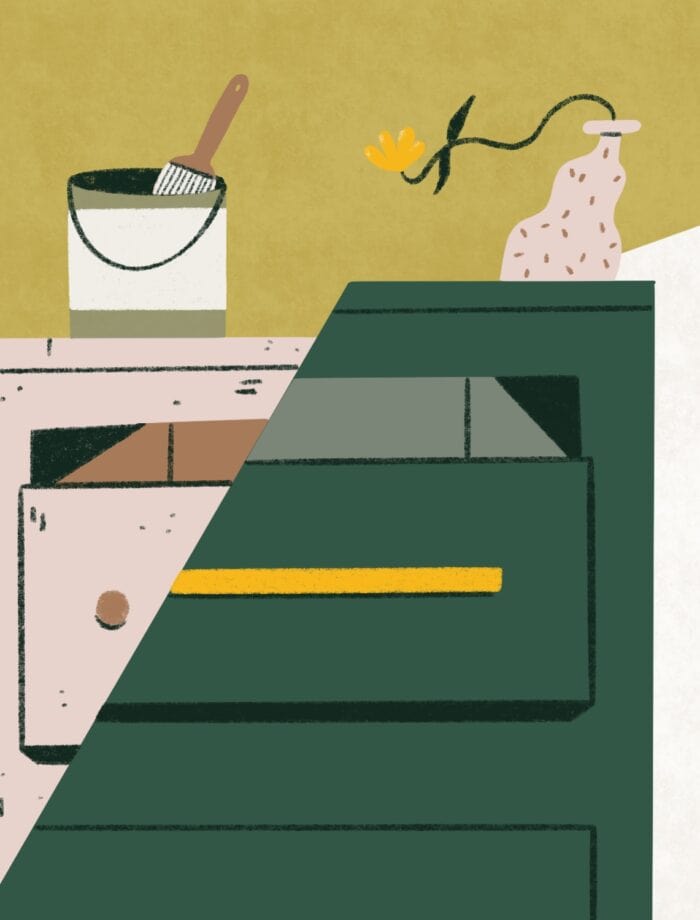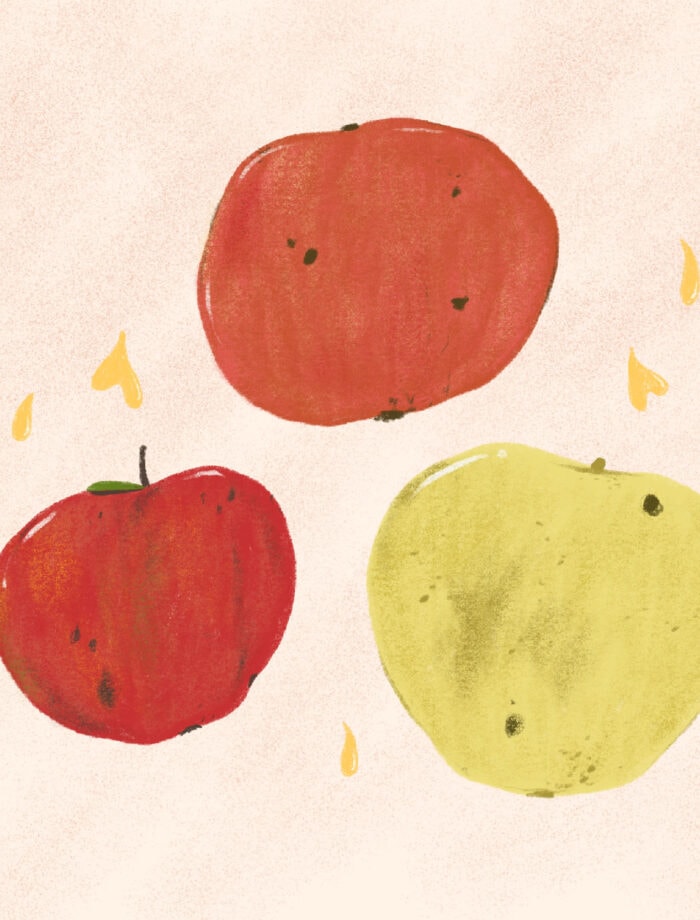Illustration by Hawnuh Lee.
I *thought* I was a plant witch but apparently, it’s just easy to grow houseplants in the Pacific Northwest. But since I moved to NYC my plant bbs are dyinggg. The lack of light in my first-floor apartment combined with the fluctuating temperatures and my aggressive radiator (pronounced RAD-E-ater, according to my roommate), does not make for a happy plant. I lost a pliea, y’all, I couldn’t have killed my plieas in Portland if I tried. They’re literally known for being an “easy, care plant.” Please keep your judgments to yourself, I am in mourning.
So how do you keep your sweet angels alive? Well, I asked all the plant experts I could find in Portland, Hawai’i and NYC and also Google and got a lot of conflicting reports. One thing to note when making your own fertilizer is that you won’t know the NPK ratio, which is the proportion of nitrogen, phosphorus and potassium, in your mix. Having insufficient quantities of nitrogen, phosphorus or potassium will affect plant growth and yields. To learn more about what the soil in your area needs, reach out to an agricultural program at a university in your state or a gardening center.
Let’s get into it!
Here are your best options for DIY fertilizer.
Compost
This is probably the most obvious. Compost works well as mulch or as fertilized soil. But for houseplants, my recommended method is compost tea. There are a variety of recipes that you can tweak to see what works best for your plants but the basic idea is to mix non-chlorinated water with your inoculant (finished compost or worm castings) and a food source for the fungi or bacteria (generally some combo of unsulfured blackstrap molasses, liquid kelp fertilizer/soaked kelp meal, and liquid fish fertilizer) and let it sit for about 24 hours. Then you can dilute the tea and add it to your soil.
Worm castings
If you have a worm bin (one, I’m jealous, please talk to me about it and two), you’ve got some prime fertilizer on your hands. You can harvest your worm poop and add it to your soil (either within the soil or as a top or side dressing) to enrich the soil, stimulate plant growth and enhance your soil’s ability to retain water.
Aquarium water
(as long as it’s not saltwater!). Aquarium water that’s changed regularly can be great for your green, leafy children. Depending on if your tank is chemically treated, this might not be the best option for edible plants but rather for ornamentals. Tank water is full of beneficial bacteria and trace nutrients (including potassium, phosphorus and nitrogen) plants love.
Proceed with caution
I’ve heard conflicting advice on the below but wanted to briefly discuss them because these tips are all over Pinterest. I wanted to give y’all more context so you can make informed decisions about what to feed your babes.
Coffee grounds
Because of its nitrogen and acidity, coffee grounds are often mentioned as a fertilizer. But because they are super acidic, be careful, not all plants love acidic environments and not all soil needs a coffee-level boost of nitrogen. To be safe, it may be best to add the grounds to your compost and use the compost in the soil.
Bananas peels
In theory, you could keep the banana for your bad self to make some banana bread and soak the peels in water to pour it on your plant or add directly to your soil in small pieces. However, I don’t believe there’s enough potassium or phosphorus in the peel (especially when it’s just soaked) to do anything more than attract pests. Soaking the peels in water won’t hurt but I don’t think it will help much either.
Starch water and particularly fermented starch water
Rinse water from washing rice or from cooking potatoes or pasta (if you salt or oil your water, please don’t use it) is a fertilizer option. Rice water is also allegedly a pest repellent. I haven’t found anything that says starch water can harm plants but I also did not find scientific evidence that proves starch water is an ideal fertilizer. Although, the Center for Sustainable Development in the Bahamas did have a recipe for fermented starch water, which is a good sign.
Eggshells
Vegetarians, you may have seen a plethora of “how to use eggshells in the garden” posts. Folx claim eggshells can be used as fertilizer (especially for tomatoes), seed starter, pest control, bird food (okay this one is true) and mulch (this technically could work if you had a bajillion eggshells). Like coffee grounds, I personally think eggshells belong in the compost not the garden or your smoothies (my roommate used to blitz them in the coffee grinder and add them to his smoothies but it freaked me out because the shells are so chalky and sharp). Eggshells take so long to decompose and they do not deter pests so I do not recommend this method.
If you’re looking for more information on homemade fertilizers and gardening in general, I recommend looking into Charles Dowding and calling your local university’s agriculture department to ask them questions about your soil.
This article was basically a gentle reminder that not everything you read on the Internet is true. As lovely as it would be to feed our leftover coffee grounds, fruit peels and eggshells to our houseplants and watch our living room turn into a jungle, it would probably result in more pests and yellow leaves. I was really hoping I could turn my roommate’s banana addiction into cheap and easy fertilizer but instead I’m doubling down on my campaign to convince my roommates to let me get a worm bin (if someone wants to buy this for me I will cry).




I love that you’ve acknowledged the banana peel “fertilizer.” Every time I’ve tried it, it takes my plants weeks to recover and some plants just end up rotting (like my struggling avocado tree). I wish sustainability influencers would stop spreading this around and risking the lives of green darlings everywhere.
We started this piece thinking we’d focus on a banana peel fertilizer. Turns out, plants are living entities with nuanced needs and that fertilizer just doesn’t cut it for most house plants. So glad this resonated. <3